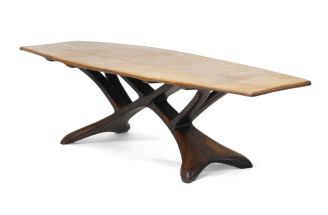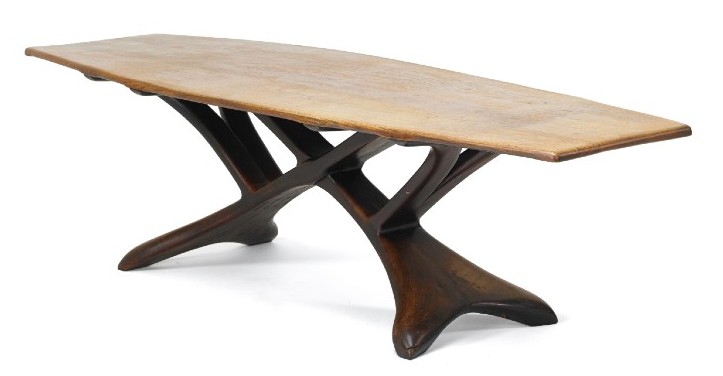
NEW YORK – “At a time when America was enamored with consumerism and mass industry, a painter named Wharton Esherick (1887-1970) moved to a small farm outside Philadelphia, Pennsylvania, and began making sculptural wood furniture one piece at a time.” Those words come from the Wharton Esherick Museum, located in buildings that previously served as Wharton Esherick’s home and studio outside of Valley Forge, Pennsylvania. The museum opened in 1972, two years after his death. The property was officially declared a National Historic Landmark in 1993.
Wharton Esherick was a phenomenon in the world of American artists and artisans. He’s best known as a sculptor who worked primarily in wood, and he applied the principles of sculpture to common, everyday objects. He was a leader in developing nontraditional designs and was a longtime source of inspiration for likeminded artists and craftspeople. He was also a founding father of the Studio Craft Movement and earned the well-deserved title “the dean of American craftsmen.” Today, his creations are coveted by collectors and exhibited in many museums.
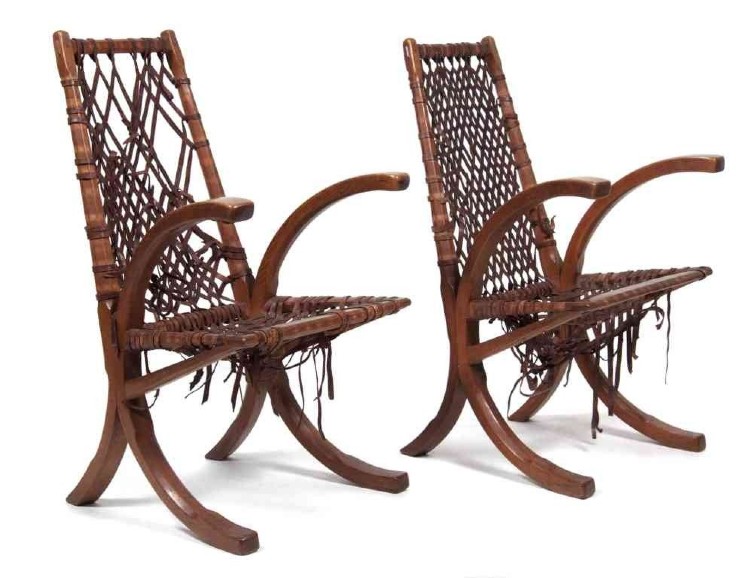
Esherick initially aspired to be a painter and enrolled at the Philadelphia Museum School of Industrial Arts (today the University of the Arts). He began carving decorative wood frames for his paintings in 1920, and that led to his making woodcut prints and ultimately to sculpture. His early furniture displayed the Arts and Crafts style so popular in the day, but by the 1930s he was making sculptures and furniture influenced by German Expressionism and Cubism. The angular and prismatic forms of these two movements led to his trademark freeform curvilinear shapes.
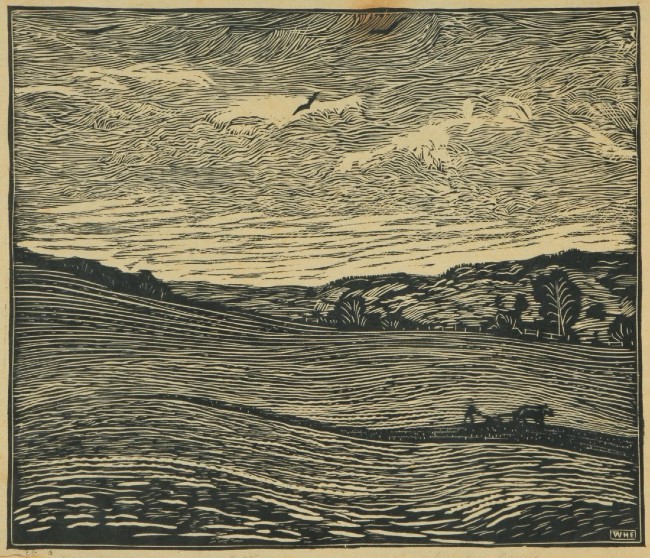
“It’s always difficult to say exactly how much a given artist influenced those who followed,” said David Rago of Rago Arts & Auction in Lambertville, New Jersey. “I like to think of Esherick as part of the timeline of postindustrial revolution furniture design. If you look at Arts and Crafts furniture, for example, you see many of the elements of design that Esherick later championed, and ultimately took a step – or three – farther.”
“For example,” Rago said, “allowing the wood to be wood, reveling in the natural qualities of the material, the grain, color and occasionally the warts, which Nakashima would eventually raise to high art. Structural detailing like exposed joinery or added butterfly joints, something the Arts and Crafts movement brought into the 20th century vernacular, Esherick modified in smooth, curving and sexy ways, continuing the sentiment but updating the notion to something more modern and stylish.”
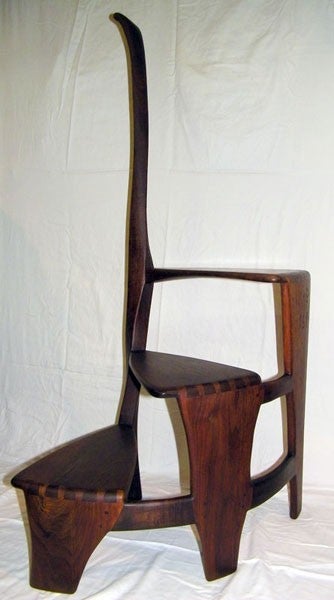
“Again,” he added, “when you look at the work of George Nakashima, Phil Powell, Wendell Castle and Sam Maloof, these appear as celebrations of wood, and the mark of the artist/craftsman, manifest in exposed structural detailing, becomes part of the decorative process. Esherick was influenced by earlier work, created his own language, and helped shape what was to follow. There is a continuum, and his role is a vital piece of that.”
Matt Wilcox of Material Culture in Philadelphia said Esherick’s great artistic influence on modern design in America cannot be overstated, although it is often uncredited. “Simply put, he changed how people saw the material culture of the home, transforming functional furnishings into works of art,” he said. “Younger artists turned Esherick’s phenomenal home studio into a place of pilgrimage during his lifetime, and his socially prominent clients, whose homes he transformed, were very visible and vocal proponents of Esherick’s contributions. Still, even today the academic and museum worlds are still catching up to properly understand Esherick’s historic role in design history.”
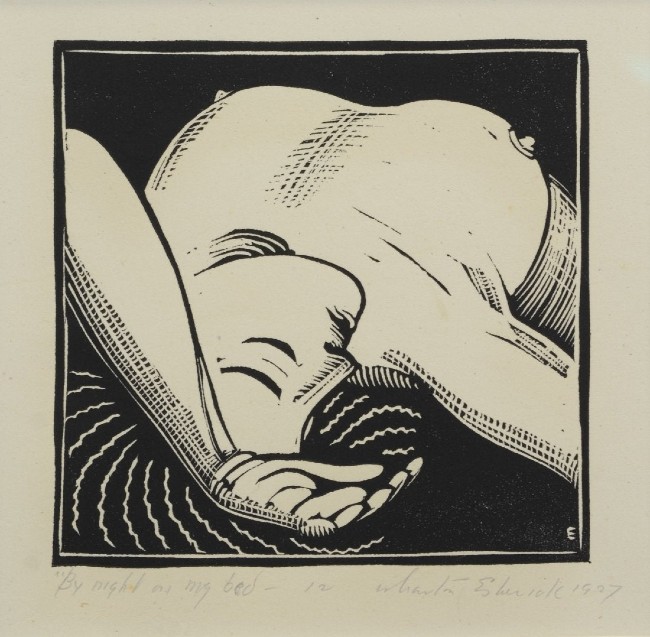
As to the demand for pieces by Esherick, Rago said the market is well off its high-water mark of 15 years ago. “The problem with his furniture,” he said, “and that of Phil Powell as well, is simply that too little of it was made, and what they did make was labor-intensive. Both Esherick and Powell had small studios, with one to no assistants most of the time. It’s been estimated that Powell made fewer than 1,000 pieces. Esherick perhaps made more than that, plus interiors, but then Powell was also a designer of space, so he fits there as well – or maybe he made fewer.”
Rago contends this says many good things about the furniture, but describes a difficult market to develop. “By this, I mean that when you buy a piece of Esherick furniture, the man-made most or all of it himself,” he remarked. “The downside is that it’s hard to find any to sell, especially if someone wants something right now. Imagine you want to buy – or have a client who wants – a dining room set by Esherick. Try to find one, in the moment. That is almost an impossible task because so few were made, and even the ones that might come to market don’t emerge as a unit. You might be able to find a sideboard, or a super rare dining table, or a set of chairs, also very scarce. But all of them at the same time? Good luck. By comparison, Nakashima made about 40,000 pieces of furniture. Dining room set? No problem. So, the market is down, in many cases by a lot, and while it’s unfortunate for Esherick’s legacy, it does allow new collectors and old admirers the opportunity to buy extraordinary pieces by a singular artist at low prices.”

Wilcox at Material Culture had a slightly different take. “The market for Esherick has never been stronger,” he declared. “Relatively speaking, very few objects of his come up for auction in any given year. When they do, many of Esherick’s large, unique commissions have been reaching six figures for the last 10 years. Fortunately for the young collector, Esherick’s prolific output included paintings, carved frames, kitchen utensils, small sculptures, chess pieces, door latches, woodblock prints and more. Some of these, when you can find them, can be had for just thousands or even hundreds of dollars at auction. To guarantee you’ll find an Esherick, a person would have to go to one of the few dealers who specialize in his material, and for that convenience the prices could be much higher.”
Wharton Esherick exhibited hundreds of times during his lifetime and his work is now in the collections of the Philadelphia Museum of Art, the Metropolitan Museum in New York, the Whitney Museum in New York, the Pennsylvania Academy of the Fine Arts and many other museums. Most of his work remains in private hands. His home and studio were his largest piece of art. The buildings evolved over 40 years as Esherick lived and worked there. Esherick’s daughter, Ruth Bascom (1922-2018), was the wife of the noted architect Mansfield Bascom.


